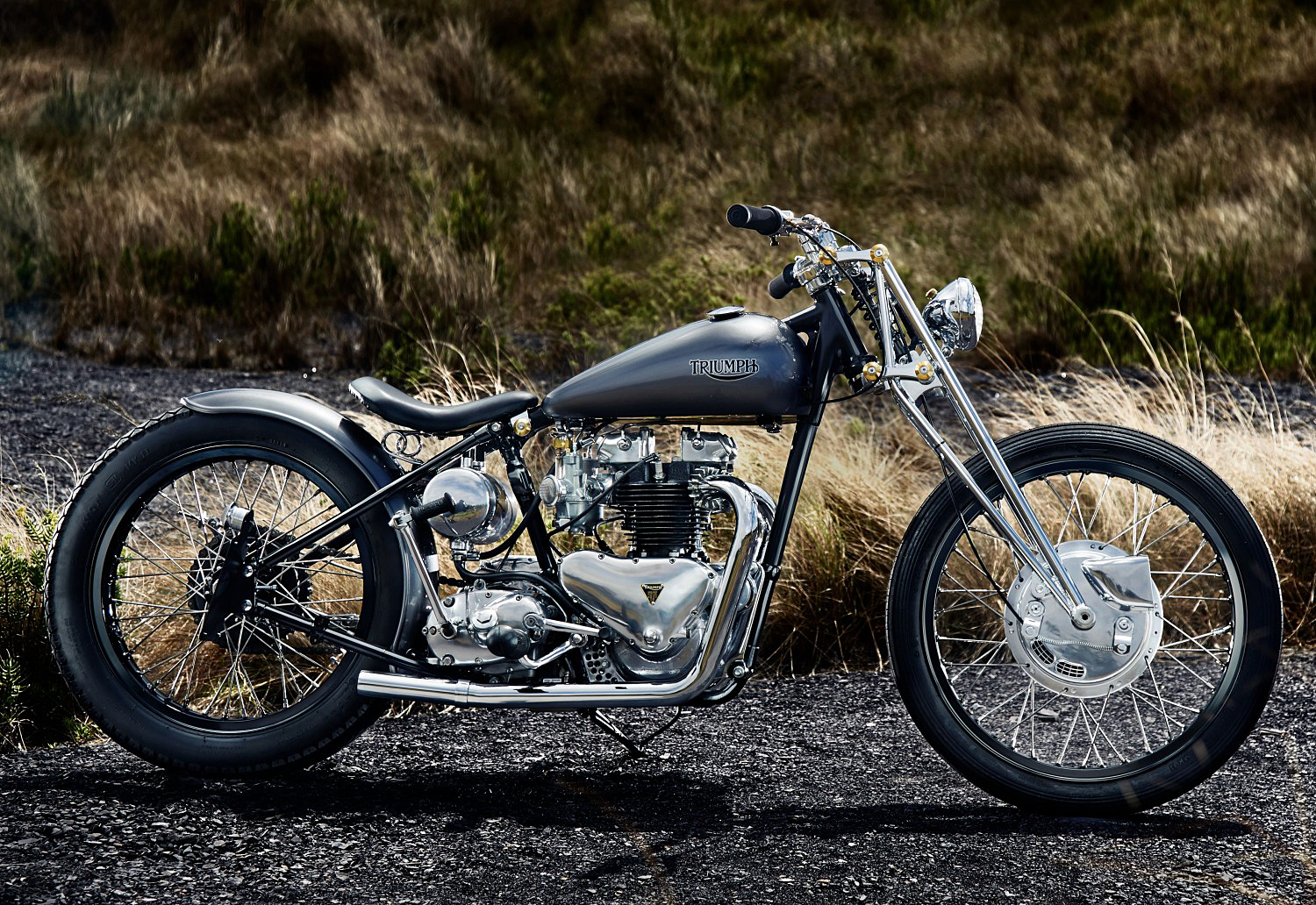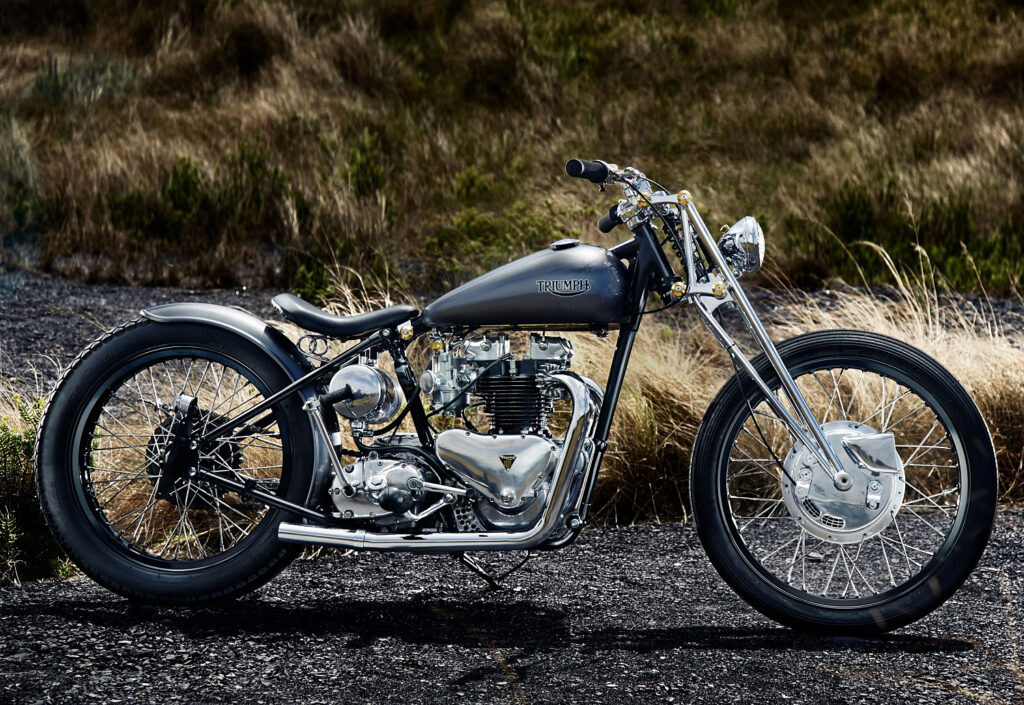
The parallel twin is without a doubt the engine du jour for just about every motorcycle manufacturer in the world right now, with one sensational bike after another being released with a tall twin. But you have to go all the way back to the 1937 National Motorcycle Show in the UK, where Edward Turner, Triumph’s Chief Designer and Managing Director, launched the Triumph Speed Twin, the world’s first truly successful example of the engine configuration. Clearly, Turner was ahead of his time with his mechanical package, but looking at this incredible example, you have to say the aesthetics of the engine have aged like a fine wine too. But this is no stock rock, built by Australia’s Paul Berger and his father, this 1949 Speed Twin is quite simply a breathtakingly beautiful bobber.
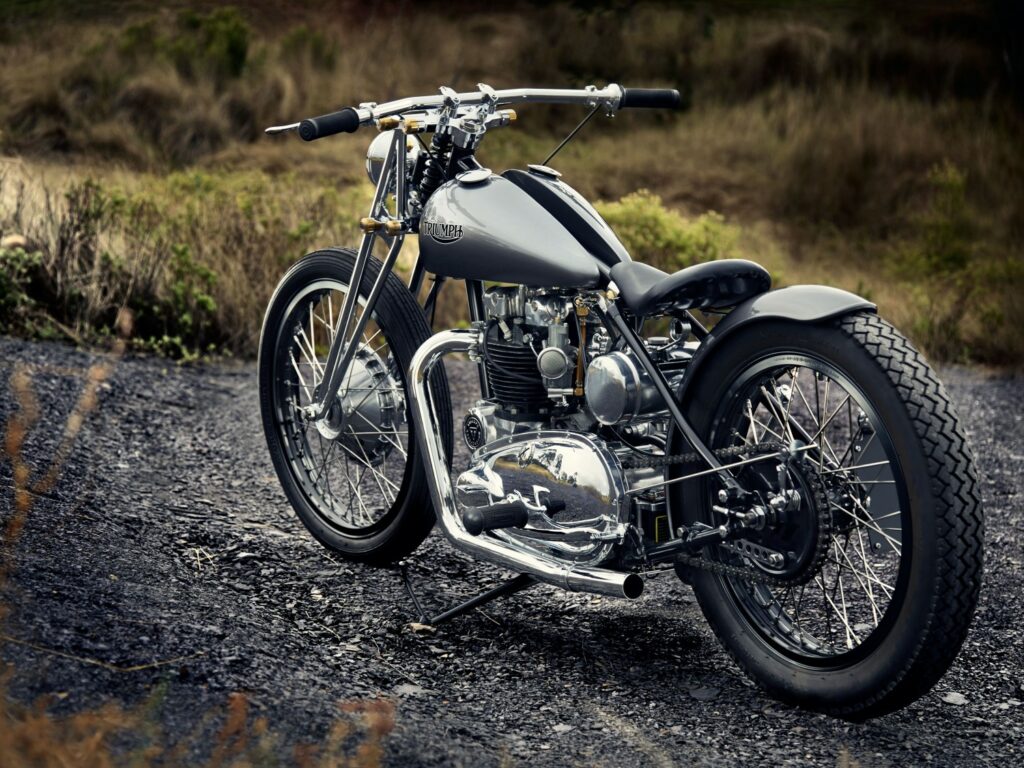
Paul has always had a love for Brit bikes, something he picked up from his father and shared with his brothers as they spent their youth pulling apart and rebuilding motorcycles of all kinds, from motorcrossers to classics, race bikes to stunt machines. When Paul’s mother passed away back in 2013, the successful business owner decided a good way for his father to keep busy following the tragic loss, was to have a project to work on. He went looking and found this ’49 Speed twin, which was not much more than the frame, engine, gearbox and a box of bits, and figured he and his dad could build it together, utilising not only their individual skills but some help from the world’s best.
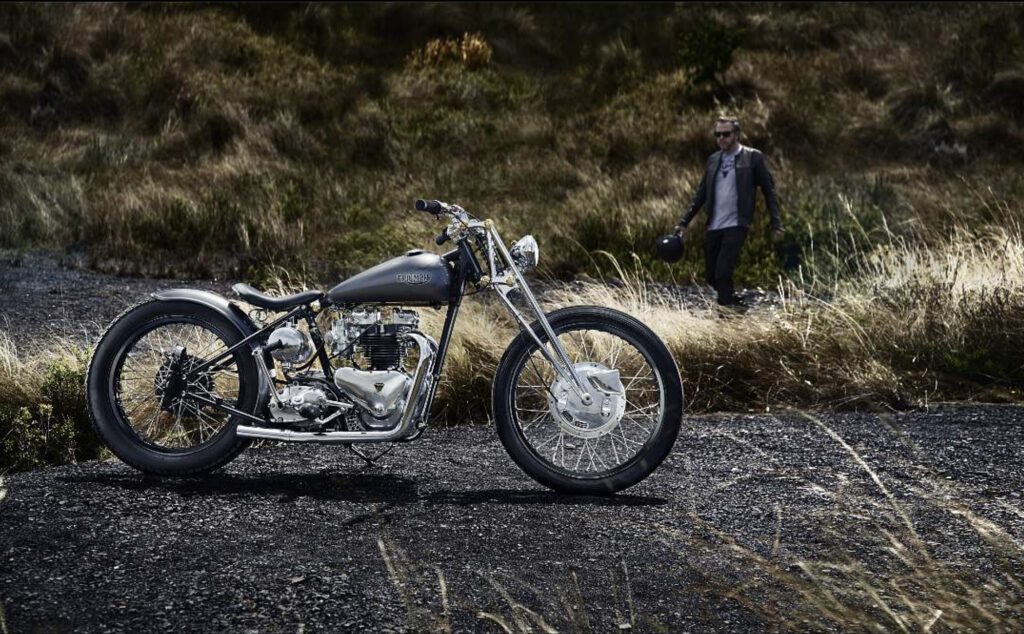
From the off-set, Paul knew it was the minimalist look that he was after. “Getting something to look simple and just right is incredibly difficult. I think the greatest challenge was not what to do, but what NOT to do. Trying to keep things consistent and minimal and not allowing one element to distract from another. Overall, the stance of the bike and getting the right visual flow from the tank to the seat to the rear guard was the hardest thing to get right,” Paul explains. But first, the engine and gearbox were sent to his Dad in Queensland, where they would undergo a much needed and very careful rebuild, which took about 18 months to complete.
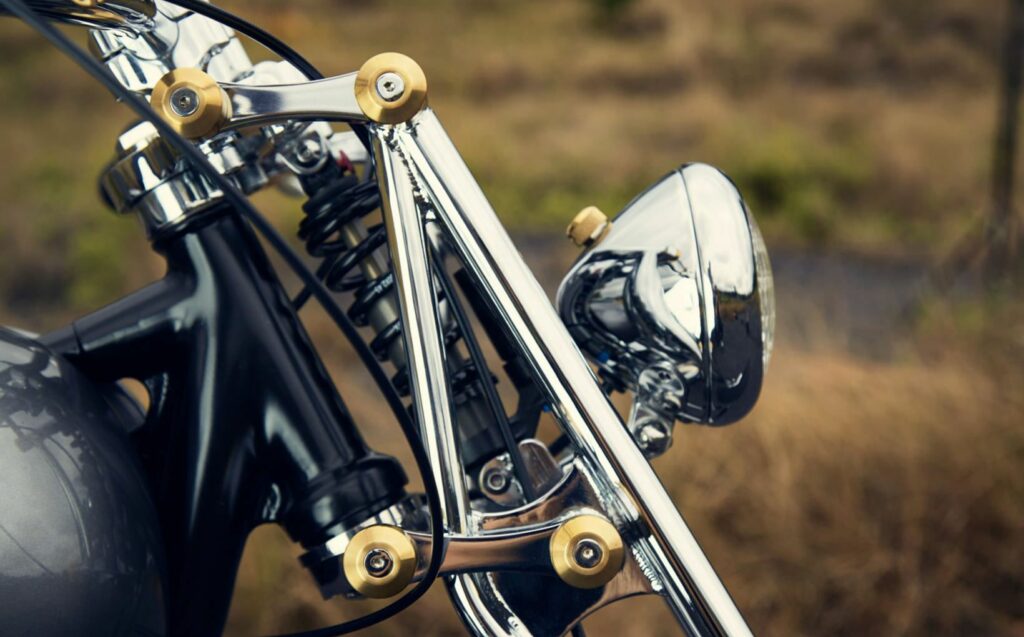
Now with all of the bike back in one place, Paul could get on with the rest of the build, which includes a final strip and assembly by “hard-core Harley guy” Brett Williams. Post-war, girder forks had all but been dropped across the industry, but to kit his out with a special front end, Paul got into contact with California’s Spitfire Motorcycles. They resized one of their Harley designs and then given the lightweight of the bike, the heavy billet shocks were replaced by a Fox mountain bike unit. The hardtail is then kitted out with Borrani wheels from Italy, measuring 21in and 19in respectively, neatly wrapped up in Avon rubber.
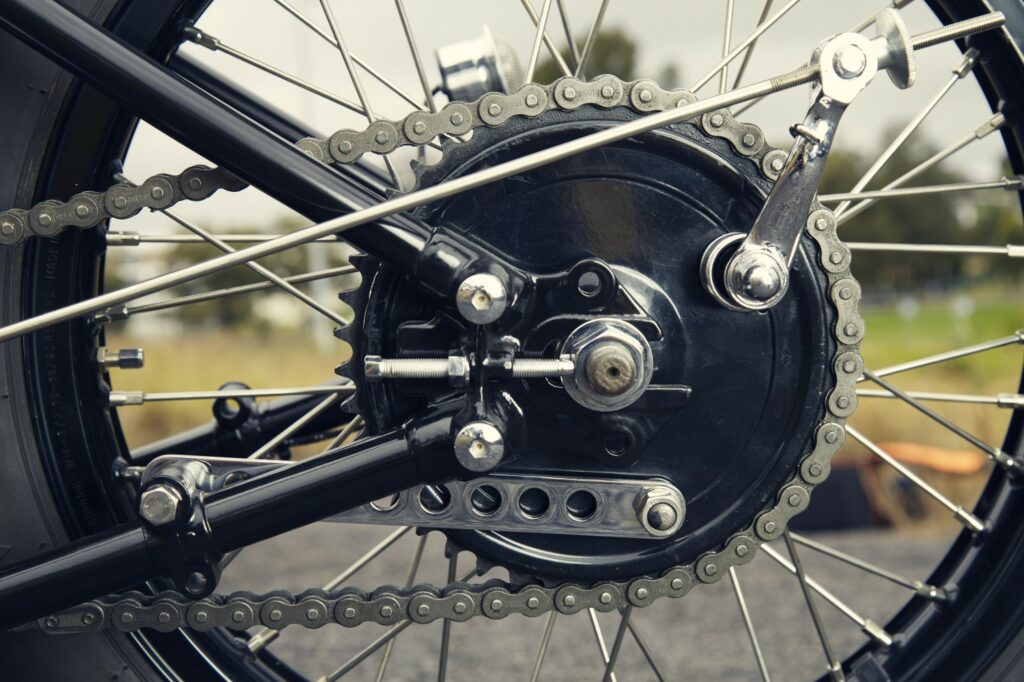
The braking also gets a boost, the rear is a rebuilt stock piece but the front now runs an 8-inch twin-leading shoe setup from the ’70s, which has been laced to those beautiful Italian rims with stainless spokes. To steer his beautiful steed, Paul chose a set of 32-inch wide drag bars that are mounted to the girder thanks to RSD risers. And the controls are the always impressive Kustom Tech one-inch throttle housing and hand controls. One of the incredible things about this build is whether the parts are new, old or rebuilt, they all retain a spectacular level of finish which helps the visuals flow effortlessly from the front to the rear of the bike.
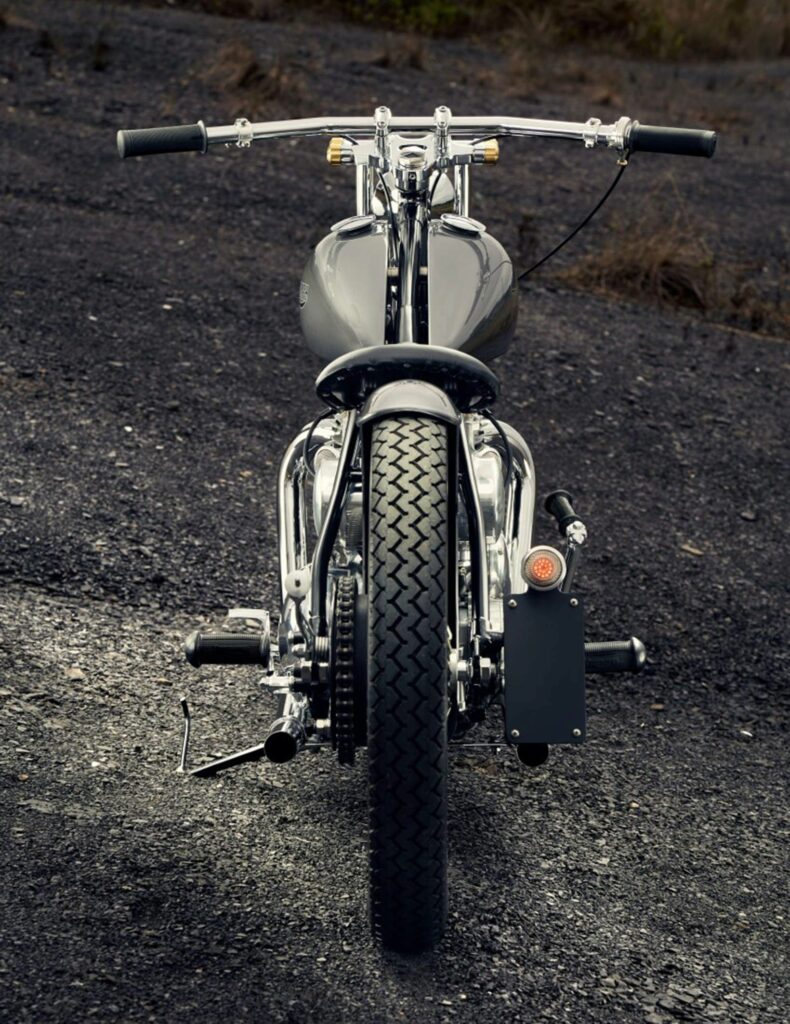
Speaking of visuals, that tank is certainly not the stock Triumph unit, and Paul had very exacting ideas of what he wanted. It all starts with a massive Harley tank which has been split, shaped and smoothed out to perfection by “Steve O”. One of the benefits of this approach is the opening that not only shows off the frame but allows for a beautiful transition to the seat, but just what seat would Paul go for? He chose a Biltwell Slimline but had Impact Metal Works customise it to suit the stock mounting setup, with twin rear springs at the back. And then it was over to Jeff Squires Trimming for a fine-grade leather to be upholstered over the top. To keep the lines flowing, Paul had Joe from Cooper Smithing Co. in Washington State fabricate a pair of fenders, but his desire to keep the look minimalist means only the rear ever ended up going on.
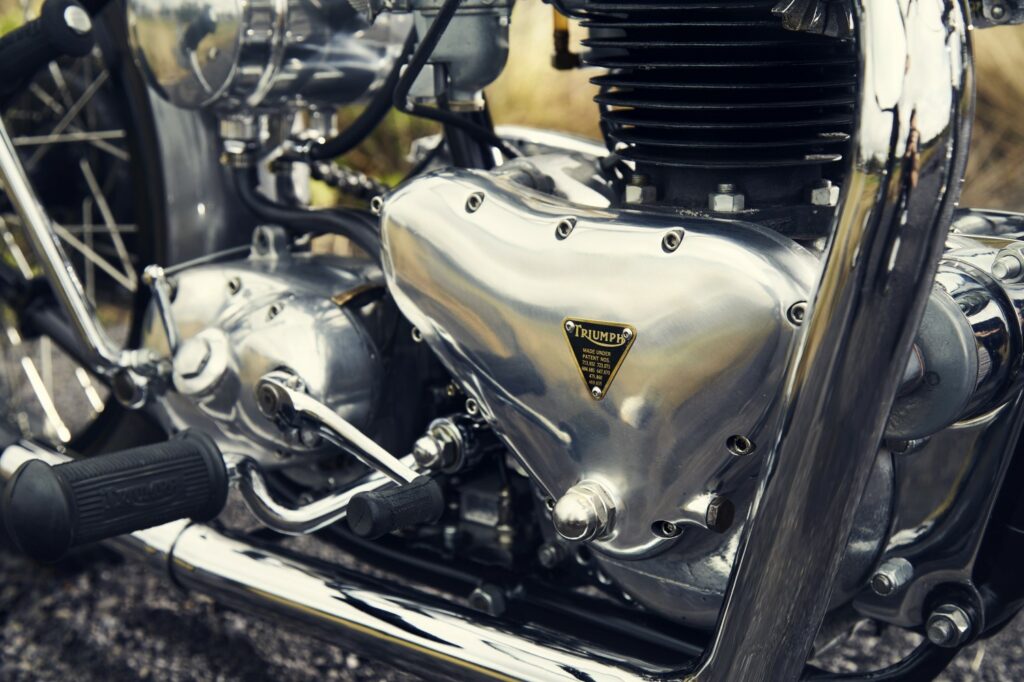
The stunning mounting brackets for this piece were crafted by Paul’s cousin, John Abbott. Time to pick the paint and owning a modern Triumph Thruxton R, it was felt that the ‘silver ice’ hue would look amazing on the old Speed Twin and John McKenzie Smash Repairs have laid it down in style. To bring the bike up to the same standard, ‘Dutchy’ painted the black framework while Blu-Chrome perfected the chrome plating and metal polishing. Now Paul could slot in the motor and box his Dad had built, and it gets a hop up with the single carb ditched for a pair of 26mm Amals, fed individually from the twin tanks; just don’t forget to fill both sides.
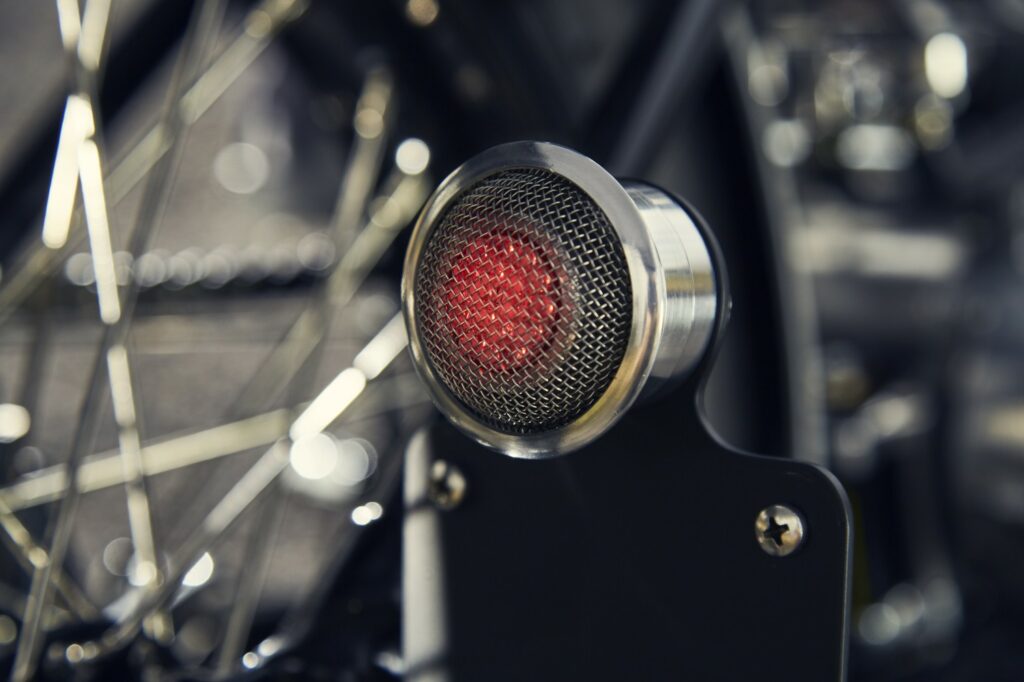
Believe it or not, the exhaust pipes are off-the-shelf pieces, made in Oz by Bob at Classic All Parts, and they sure do look the business. The dry-sumped engine is kept full of oil thanks to a Mooneyes tank below the seat; this truly is a universal build! To finish the Triumph Paul was adamant that it stay true to the original 6-volt system, but it’s all been entirely rebuilt from scratch, features a custom velocity stack taillight and a tiny GPS speedo to make things road legal. It’s a family affair with a global influence and you can only marvel at the magnificence of this minimalist motorcycle, that pays a fitting tribute to an all-important classic and does it in true custom style!
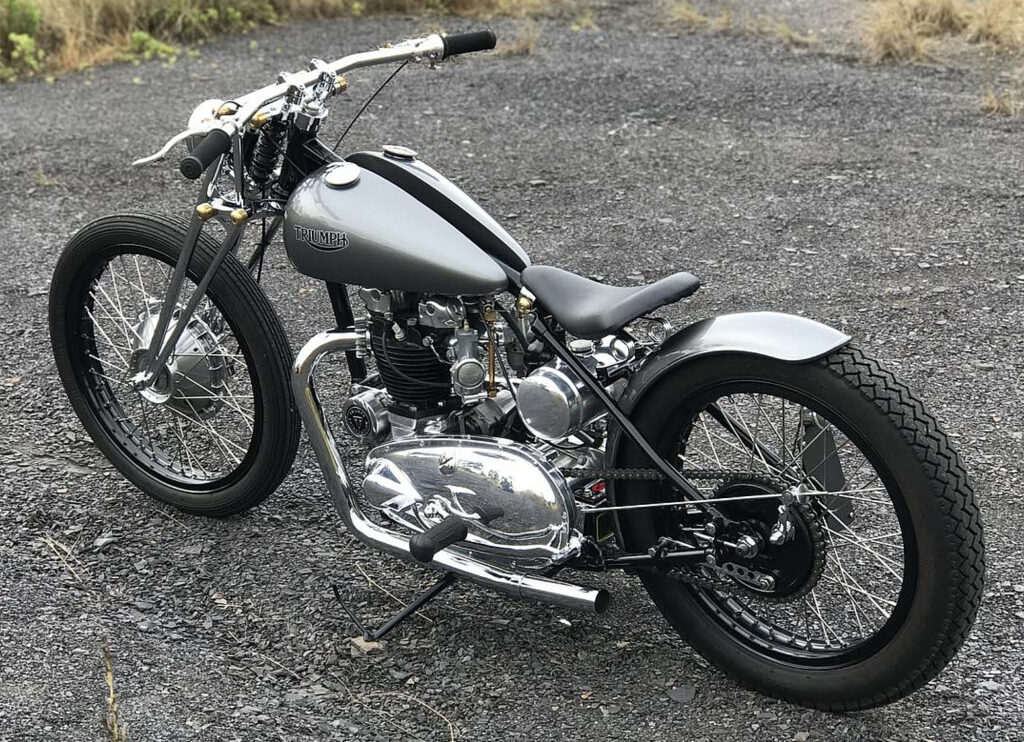
[ Paul Berger ]

